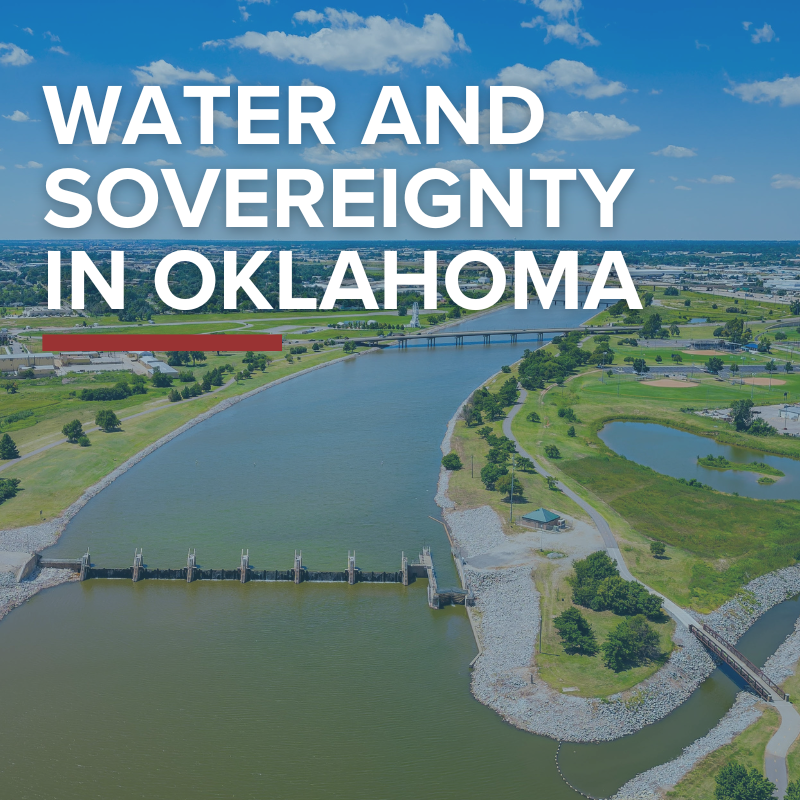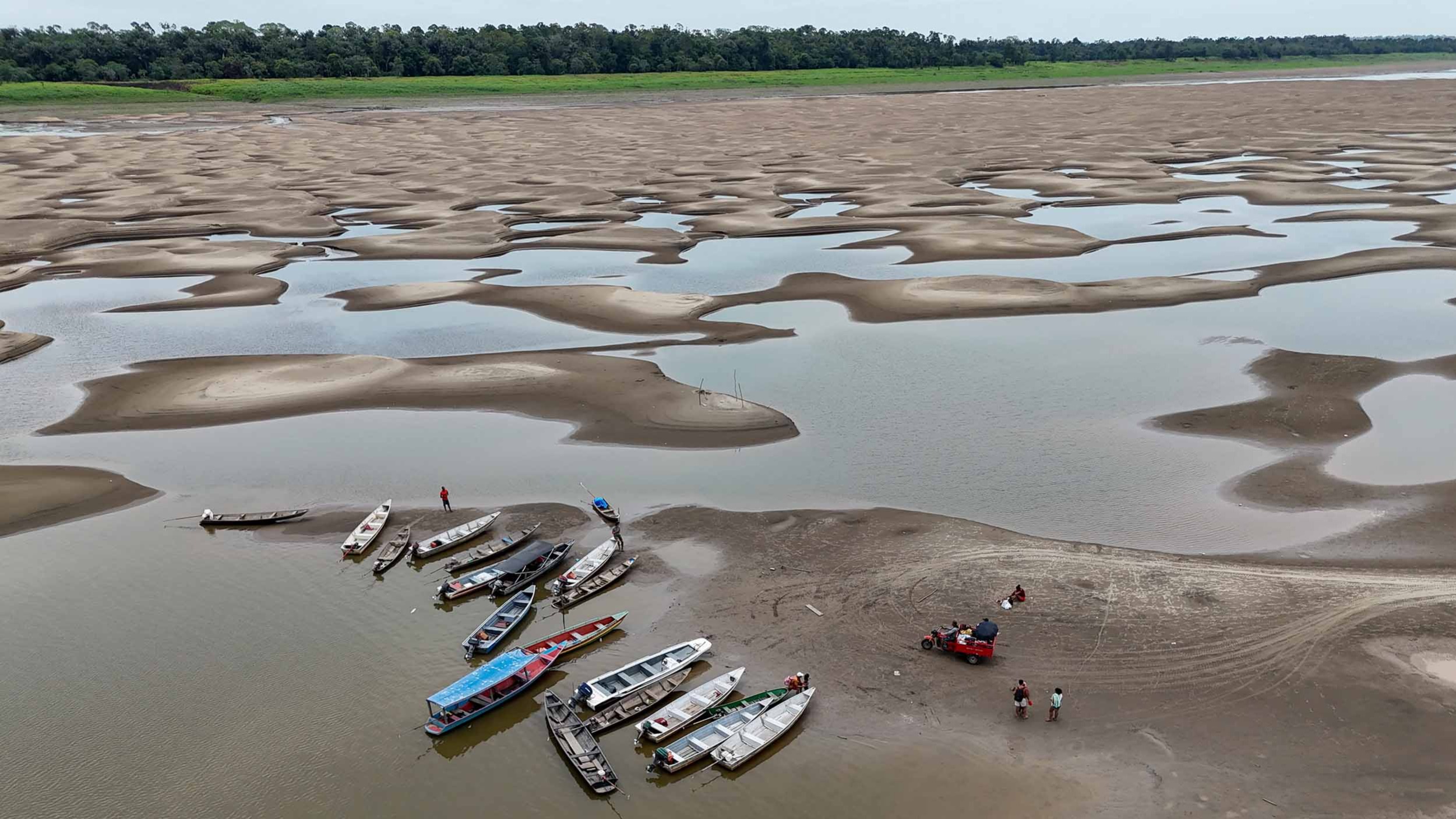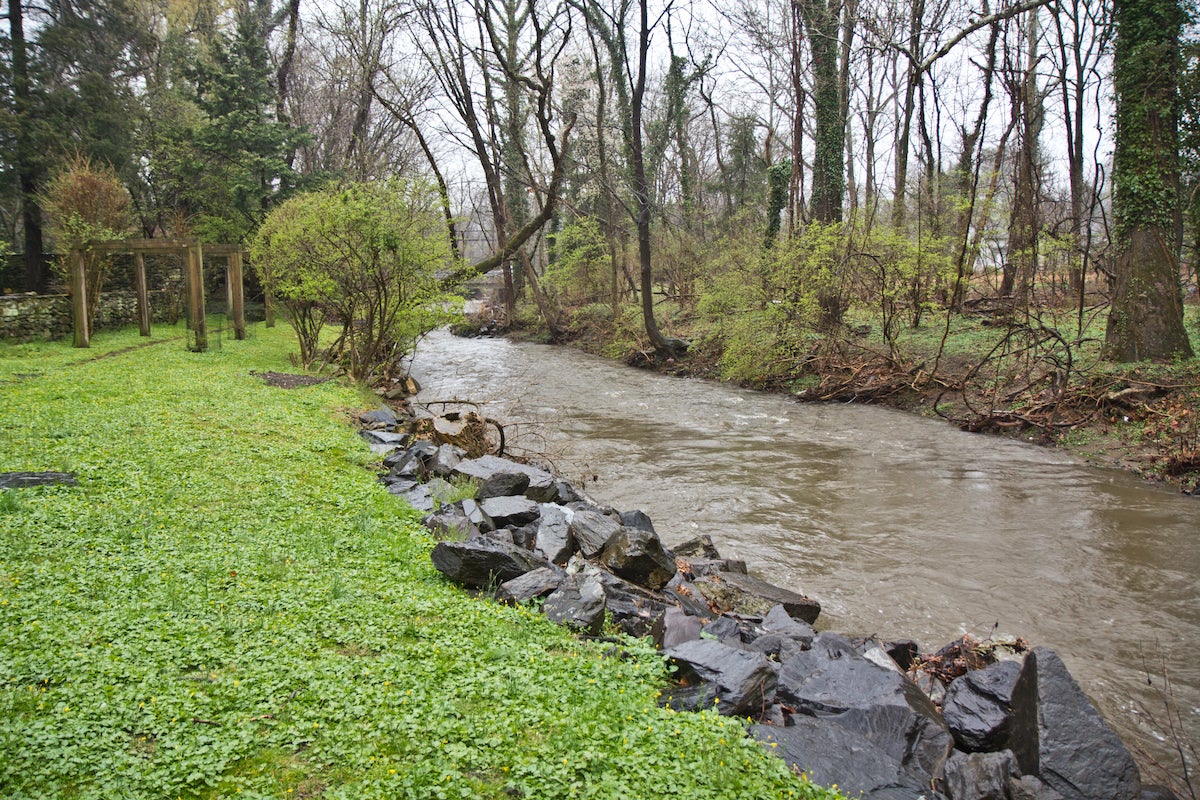Tribal Water Issues in Oklahoma – Native American Rights Fund

Report on Water Resource Management and Tribal Sovereignty in Oklahoma in the Context of Sustainable Development Goals
Introduction: Challenges to Achieving SDG 6 in Oklahoma
Tribal Nations in Oklahoma are confronted with significant water quality and quantity challenges that directly impede progress toward Sustainable Development Goal 6 (SDG 6: Clean Water and Sanitation). The region experiences climate extremes, including prolonged droughts and frequent flooding, which exacerbate existing vulnerabilities. These issues are compounded by systemic water quality degradation and jurisdictional conflicts, disproportionately affecting Indigenous communities and highlighting inequalities targeted by SDG 10 (Reduced Inequalities).
- Water Scarcity and Excess: The state’s cycle of drought and flooding poses a direct threat to water security and infrastructure, impacting SDG Target 11.5 (Reduce the impact of water-related disasters). Tribal lands are reported to be significantly more susceptible to flooding.
- Water Quality Degradation: Surface water quality is compromised by agricultural runoff and algal blooms. Furthermore, hydraulic fracturing (“fracking”) operations contaminate both ground and surface water, undermining efforts to achieve SDG Target 6.3 (Improve water quality by reducing pollution).
- Access to Safe Drinking Water: The most critical issue is the lack of access to safe drinking water, a direct failure to meet SDG Target 6.1 (Achieve universal and equitable access to safe and affordable drinking water). Many Tribal members rely on groundwater sources that are depleted by commercial wells and contaminated by industrial activities, particularly oil and gas injection wells.
The state’s adversarial stance toward Tribal jurisdiction over water resources creates a significant barrier to implementing the integrated water resources management called for in SDG Target 6.5. Without quantified water rights and regulatory authority, Tribal Nations cannot effectively manage or protect their water resources, perpetuating a cycle of environmental injustice.
Analysis of Oklahoma’s Water Governance Framework
State Water Law: A Dual Doctrine System
Oklahoma operates under a complex dual-doctrine water law system that combines riparian and prior appropriation rights. This hybrid approach creates administrative challenges, particularly in times of scarcity, and complicates the integration of Tribal water rights into a cohesive management plan aligned with sustainable development principles.
- Riparian Rights Doctrine: Applied in the more water-abundant eastern half of the state, this doctrine grants landowners with property bordering waterways the right to make “reasonable use” of the water. These rights are senior to all appropriative rights.
- Prior Appropriation Doctrine: Dominant in the arid western half, this doctrine follows the “first in time, first in right” principle, where water rights are established through actual, beneficial use.
This system, managed by the Oklahoma Water Resources Board (OWRB), also recognizes ownership rights to groundwater, which can be extracted for domestic use without a permit. The complexity of this framework makes equitable water allocation and sustainable management (SDG 6.4) difficult to achieve.
Tribal Water Rights: Unquantified and Contested
Tribal water rights in Oklahoma are derived from federal law but remain largely unquantified, creating legal uncertainty and hindering long-term water planning. This lack of clarity undermines the development of strong institutions and access to justice as outlined in SDG 16 (Peace, Justice and Strong Institutions).
- Federally Reserved Rights (Winters Doctrine): This doctrine holds that the federal reservation of land for a tribe implicitly reserves sufficient water to fulfill the purposes of that reservation.
- Restricted Fee Water Rights (Five Tribes Doctrine): Unique to Oklahoma, this doctrine posits that the Five Tribes (Choctaw, Chickasaw, Cherokee, Muscogee, and Seminole) and their successors hold fee title to water rights that accompanied their original land grants in Indian Territory. These rights are potentially more extensive than Winters rights.
Only the Choctaw and Chickasaw Nations have quantified their water rights through a settlement with the state. For the other thirty-six Tribal Nations, the absence of quantification prevents the enforcement of their rights and obstructs their participation in integrated water resource management (SDG 6.5).
Jurisdictional Barriers to Tribal Water Quality Management
The “2005 Midnight Rider” and Treatment as a State (TAS) Status
A significant institutional barrier to Tribal self-governance over water quality is a 2005 federal legislative provision known as the “Midnight Rider.” This provision effectively gives the State of Oklahoma veto power over any Tribal Nation’s application for “Treatment as a State” (TAS) status under federal environmental laws like the Clean Water Act. This directly contravenes the principles of SDG 16.7 (Ensure responsive, inclusive, participatory and representative decision-making).
The provision requires Tribal Nations to enter into a cooperative agreement with the state to jointly administer environmental programs, undermining Tribal sovereignty and the intent of TAS. To date, the Pawnee Nation is the only tribe in Oklahoma to have obtained TAS for a Clean Water Act program, yet it has been unable to implement its water quality standards due to state-level obstruction.
Impact of the McGirt v. Oklahoma Decision
The 2020 Supreme Court ruling in McGirt v. Oklahoma affirmed that the Muscogee (Creek) Nation’s reservation was never disestablished, extending this precedent to other major reservations and re-establishing much of eastern Oklahoma as Indian Country. Despite this landmark decision affirming Tribal jurisdiction, the state invoked the “Midnight Rider” to request and receive EPA approval to administer environmental regulations on non-Tribal land within these reservations. This action perpetuates the state’s control and continues to marginalize Tribal authority, in opposition to SDG 10.3 (Ensure equal opportunity and reduce inequalities of outcome).
Pathways to Sustainable Water Governance and Tribal Self-Determination
Advancing Tribal Sovereignty Through Local Action
Despite systemic challenges, Tribal Nations in Oklahoma can pursue alternative mechanisms to protect their water resources, thereby supporting SDG 6.b (Support and strengthen the participation of local communities in improving water and sanitation management).
- Development of Tribal Water Codes: By creating their own water codes, Tribal Nations can establish regulatory frameworks that reflect their cultural values, traditional ecological knowledge, and unique ceremonial needs.
- Recognition of the Rights of Nature: Following the example of the Ponca Nation of Oklahoma, tribes can enact laws that recognize the personhood of waterbodies, creating a powerful legal basis for their protection.
- Inter-Tribal Collaboration: Strengthening alliances between the 39 Tribal Nations in Oklahoma can create unified fronts for advocating policy change and implementing shared resource management strategies, such as reciprocal agreements for resource use.
Conclusion: The Imperative for Collaborative Governance
The ongoing water challenges faced by Tribal Nations in Oklahoma represent a critical failure to uphold the principles of the Sustainable Development Goals, particularly SDG 6, SDG 10, and SDG 16. The state’s hostility toward Tribal sovereignty and its refusal to engage in meaningful, cooperative governance is an unsustainable approach that guarantees future conflict and litigation.
Achieving water security for all Oklahomans requires a fundamental shift toward recognizing Tribal water rights and supporting Tribal self-determination in environmental management. A collaborative framework built on mutual respect among sovereigns is the only viable path to ensuring equitable access to clean water and building resilient, just, and sustainable communities for generations to come.
Analysis of Sustainable Development Goals in the Article
1. Which SDGs are addressed or connected to the issues highlighted in the article?
- SDG 6: Clean Water and Sanitation – The article’s central theme is water quality, quantity, and access, particularly the lack of safe drinking water for Tribal Nations in Oklahoma.
- SDG 10: Reduced Inequalities – The text highlights the disproportionate impact of water issues on Tribal Nations, who are more likely to face flooding and lack access to safe water, and face legal and political barriers not faced by others.
- SDG 16: Peace, Justice and Strong Institutions – The article extensively discusses legal frameworks for water rights, jurisdictional disputes between the state and Tribal Nations, and the role and effectiveness of institutions like the EPA and the Oklahoma Water Resources Board (OWRB).
- SDG 17: Partnerships for the Goals – The text points to the need for, and current failures in, cooperation between the state and Tribal Nations, mentioning the importance of consultation, negotiation, and inter-Tribal agreements to resolve water issues.
2. What specific targets under those SDGs can be identified based on the article’s content?
- SDG 6: Clean Water and Sanitation
- Target 6.1: Achieve universal and equitable access to safe and affordable drinking water for all. The article directly states that the “most pressing water issue in Oklahoma is, however, lack of access to safe drinking water” and that “Tribal members are also less likely to have access to safe drinking water.”
- Target 6.3: Improve water quality by reducing pollution. The article identifies that “Surface water quality is poor because of agricultural runoff and algal blooms” and that fracking contaminates “ground and surface water.” It also mentions contamination from “oil and gas injection wells.”
- Target 6.5: Implement integrated water resources management at all levels, including through transboundary cooperation. The entire discussion on quantifying Tribal water rights, Oklahoma’s dual-doctrine water law system, and the conflicts over jurisdiction are related to the challenges of implementing integrated water management. The OWRB’s recommendation for “consultation and negotiation” speaks directly to this target.
- Target 6.b: Support and strengthen the participation of local communities in improving water and sanitation management. The article details the struggle of Tribal Nations to exercise their sovereignty and “exerting jurisdiction over their water resources,” which is a core component of community participation in water management.
- SDG 10: Reduced Inequalities
- Target 10.3: Ensure equal opportunity and reduce inequalities of outcome, including by eliminating discriminatory laws, policies and practices. The “2005 Midnight Rider” is presented as a policy that creates a significant inequality, giving the state “veto authority over any Tribal Nation’s application for TAS” and preventing Tribes from managing their own environmental programs, a right other sovereigns have.
- SDG 16: Peace, Justice and Strong Institutions
- Target 16.3: Promote the rule of law… and ensure equal access to justice for all. The article is centered on legal conflicts over water rights, citing various legal doctrines (Winters rights, Five Tribes Doctrine) and court cases (McGirt v. Oklahoma) in the Tribal Nations’ pursuit of justice and legal recognition of their rights.
- Target 16.7: Ensure responsive, inclusive, participatory and representative decision-making at all levels. The article describes how the state government “impedes Tribal efforts at every turn” and how the “2005 Midnight Rider” prevents Tribal Nations from participating in environmental regulation, highlighting a lack of inclusive decision-making.
- SDG 17: Partnerships for the Goals
- Target 17.16: Enhance the global partnership for sustainable development, complemented by multi-stakeholder partnerships. The article concludes by emphasizing that “the durability and strength of relationships among sovereigns will be the measure of society’s success” and calls for parties to “come together in recognition of the interdependence of all life,” which is a call for partnership. The OWRB’s recommendation for quantification through “consultation and negotiation” also points to this target.
3. Are there any indicators mentioned or implied in the article that can be used to measure progress towards the identified targets?
- For Target 6.1 (Access to safe drinking water):
- Indicator: The proportion of the Tribal population with access to safe drinking water. The article implies this is a key metric by stating, “Tribal members are also less likely to have access to safe drinking water.” Measuring this proportion would track progress.
- For Target 6.3 (Water quality):
- Indicator: The level of water contamination from specific sources. The article explicitly mentions pollution from “agricultural runoff,” “algal blooms,” “hydraulic fracturing,” and “oil and gas injection wells.” Monitoring and reducing pollutants from these sources would serve as a direct indicator of improved water quality.
- For Target 6.5 (Integrated water management):
- Indicator: The number of Tribal Nations with quantified water rights. The article states that “Only two Tribal Nations in Oklahoma… have quantified water rights.” An increase in this number would indicate progress in integrated water resource management.
- Indicator: The existence and number of cooperative water management agreements between the state and Tribal Nations. The article notes that the “Midnight Rider” requires such agreements for TAS status, making their successful negotiation a key progress indicator.
- For Target 10.3 (Reduce inequalities):
- Indicator: The legal status of the “2005 Midnight Rider.” The article identifies this provision as a primary source of inequality. Its repeal or amendment would be a clear indicator of progress toward eliminating a discriminatory policy.
- For Target 16.7 (Inclusive decision-making):
- Indicator: The number of Tribal Nations in Oklahoma that have successfully obtained and implemented Treatment as a State (TAS) status for environmental programs. The article states that the Pawnee Nation is the “only Tribal Nation in Oklahoma that has obtained TAS” and still cannot fully implement it. An increase in this number would signify more inclusive governance.
4. Table of SDGs, Targets, and Indicators
| SDGs | Targets | Indicators Identified in the Article |
|---|---|---|
| SDG 6: Clean Water and Sanitation |
6.1: Achieve universal and equitable access to safe and affordable drinking water for all.
6.3: Improve water quality by reducing pollution. 6.5: Implement integrated water resources management at all levels. 6.b: Support and strengthen the participation of local communities in improving water and sanitation management. |
Proportion of Tribal population with access to safe drinking water.
Levels of contamination from agricultural runoff, algal blooms, and oil/gas operations. Number of Tribal Nations with quantified water rights (currently 2 of 38). Number of Tribal Nations able to exercise regulatory jurisdiction over their water resources. |
| SDG 10: Reduced Inequalities | 10.3: Ensure equal opportunity and reduce inequalities of outcome, including by eliminating discriminatory laws, policies and practices. | The legal status of the “2005 Midnight Rider,” which the article presents as a discriminatory policy hindering Tribal sovereignty. Its repeal would be a key indicator. |
| SDG 16: Peace, Justice and Strong Institutions |
16.3: Promote the rule of law… and ensure equal access to justice for all.
16.7: Ensure responsive, inclusive, participatory and representative decision-making at all levels. |
Resolution of legal disputes over water rights through settlements or adjudications.
Number of Tribal Nations that have successfully obtained and implemented Treatment as a State (TAS) status for environmental programs. |
| SDG 17: Partnerships for the Goals | 17.16: Enhance… multi-stakeholder partnerships that mobilize and share knowledge, expertise, technology and financial resources. | The number and effectiveness of cooperative agreements, consultations, and negotiations between the State of Oklahoma and Tribal Nations on water management. |
Source: narf.org
What is Your Reaction?
 Like
0
Like
0
 Dislike
0
Dislike
0
 Love
0
Love
0
 Funny
0
Funny
0
 Angry
0
Angry
0
 Sad
0
Sad
0
 Wow
0
Wow
0













































































